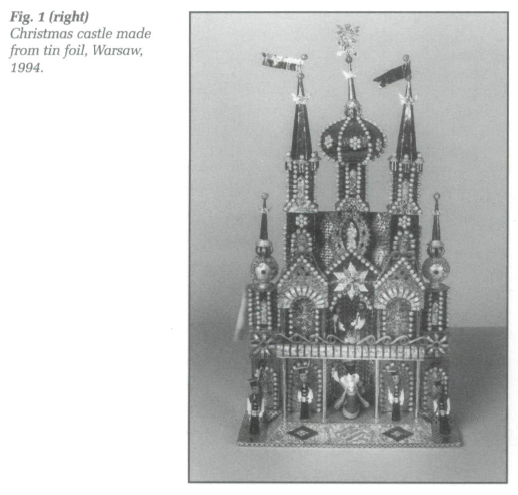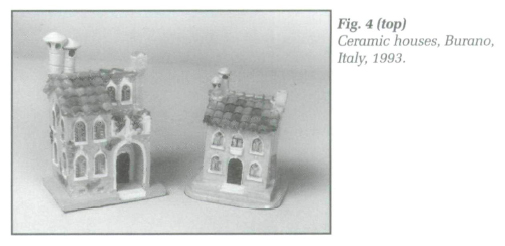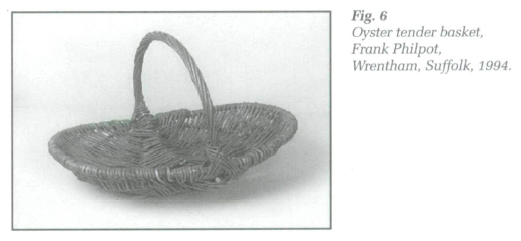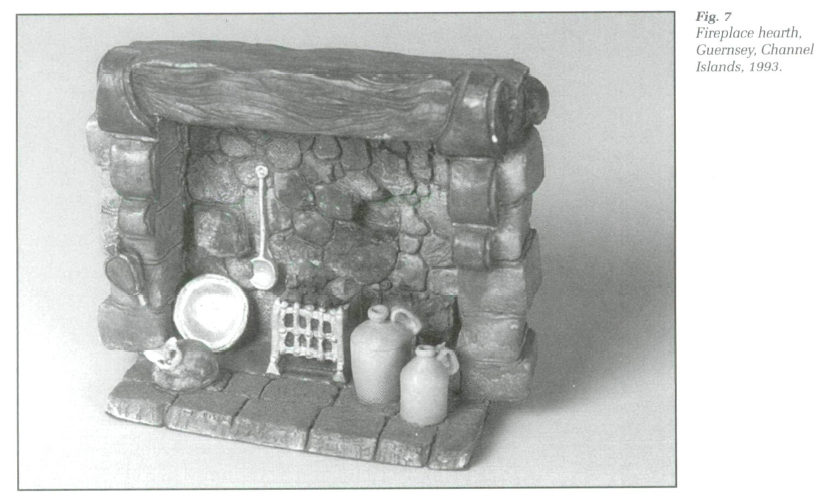Articles
Material Culture Research:
Authentic Things, Authentic Values
Abstract
Over the past twenty-five years, a number of themes have governed material culture research. Objects were often chosen for research because they expressed meaningful identities — personal, regional or national. While earlier studies focussed on creation, more recently issues of consumerism have received attention. Future research might focus on what is an authentic object; this authenticity is associated with different qualities: handmade artifacts, folk or primitive designs. However, researchers play a crucial role in determining what objects are considered as authentic, and thus which objects are researched, and which are displayed. This concern with authentic things is also one of the main impulses of modern tourism. The authentic is, finally, often linked with contemporary concepts of craft. With increasing globalization, material culture studies should focus on the definitions, creation and consumption of what are considered authentic things.
Résumé
Au cours des vingt-cinq dernières années, un certain nombre de thèmes ont inspiré la recherche en culture matérielle. On choisissait souvent des objets pour la recherche parce qu'ils exprimaient des identités signifiantes, qu'elles soient personnelles, régionales ou nationales. Alors que les études antérieures portaient surtout sur la création, on s'est intéressé récemment aux questions de consommation. La recherche future pourrait porter sur ce qui constitue un objet authentique, cette authenticité étant liée à différentes qualités : objets façonnés à la main, designs traditionnels ou primitifs. Les chercheurs et chercheuses jouent toutefois un rôle essentiel lorsqu'il s'agit d'établir quels objets on considère authentiques et donc lesquels seront étudiés et lesquels seront exposés. Cette préoccupation pour l'authenticité est également l'un des principaux moteurs du tourisme moderne. Enfin, l'authenticité est souvent liée à l'idée contemporaine d'artisanat. Suite à la mondialisation croissante, les études sur la culture matérielle devraient privilégier les définitions, la création et la consommation de ce que l'on considère des choses authentiques.
1 In 1986 a special material culture issue of Canadian Folklore canadien appeared that included an essay of mine outlining what I felt were the major trends in artifact studies in Canada.1 At about the time the essay appeared, a symposium I had organized on North American material culture research was meeting to chart the current state of theory making, and possible directions for future research.2 It would be useful, then — given the dated nature of these commentaries — for me to take stock and speculate where we might proceed in the years to come. My remarks are grounded in the Canadian context. But, as before, these comments are broader in scope, since my work in material culture studies draws on schools both in the United States and Great Britain. Charting new directions in any form of cultural studies is often a precarious task, for in doing so one points to what currently seems to be the leading trends in research, but at the same time suggesting topics that still need to be addressed.
2 I realize that in spite of perceptions that material culture research might be emerging as a unified discipline with coherent methodologies and coherent theories, this seems more ideal than real. Indeed, having researched objects in a number of interdisciplinary ways for the past twenty-five years, I realize more and more that different theories and objectives often characterize one's research, depending on whether one is a historian, ethnologist, art historian or museologist. My feelings, then, about future material culture work are clearly shaped by my own disciplinary training and research goals: that of a folklorist trained in ethnographic methods and cultural theories. Besides this overall theoretical approach and method, historically my discipline has been concerned with groups and peoples on the margins of political and economic power: workers, immigrants, women, children. Thus, my main concern in studying objects is to give voice to the ordinary, that voice speaking to elucidate culture, the ideas that shape the things.
3 Material culture studies within folkloristics (or ethnology as it is called in Europe and French Canada) have historically focussed on handmade objects created by makers who are members of what are perceived to be isolated groups, uncorrupted by the outside forces of industrialization and popular culture. Ethnologists (I prefer this term to folklorists) have often researched what are thought to be distinctive regional cultures, cultures that reflected the essence of a people or a state. The design of objects was a direct product of the attitudes and beliefs of these makers, and these objects were thus thought to be more indicative of cultural values than objects introduced from outside the group. Historically, terms like "folk craft" and "folk art" dominated much research, these categories covering the products of pre-industrial or semi-industrial cultures not yet caught up in the mainstream of mass culture.
4 Indeed, in much material culture research, such terms were not used, but it is clear that objects were chosen for study because they exhibited the unique characteristics of a people or nation: that they were somehow "Canadian" or "Maritime" or "Ukrainian." Much of this research with objects had to do with concerns about how they reflected particular identities, and thus the notion of identity remains central to much of what has been researched. We want to know how particular groups not only form identities with artifacts, but identities that are considered more meaningful.3 There is a moral tone in much of what we research, the morality of the authentic — a theme to which I will return.
5 Objects as reflective of identity often focussed on the original impulses of creation: the context in which they came to light. Studies were concerned with the original maker, the manufacturer, the patron, the designer, the materials. Yet, in the past fifteen or so years, as several writers have pointed out, shifts have been increasingly occurring in material culture studies, turning more and more to the functions of objects, and away from studies of their creation.4 This does not belittle the importance of the handmade artifact per se, but researchers have attempted to move beyond the romantic biases implicit in some material culture studies, biases that have often meant only a small portion of a people's physical life has been studied. How the object was made (whether by hand or mass-produced) has become less important than how the object actually was used.
6 This concept of "use" involves a wide range of topics: the impact of the market on the object (who buys it, the mechanisms of advertising),5 how the acquisition of the object can act to distinguish one group from another,6 how the object actually functions in a day-to-day context (its placement, alteration, role in a larger collection),7 and finally, its many re-uses.8 The entire subject of the culture of consumption has perhaps witnessed the most extensive expansion within material culture research — with scholars looking at issues of why people have and need particular objects in their homes and what leads people to acquire certain things.9 Researchers are also turning their attention to the longstanding pattern of consumer behaviour, of which the modern shopper is only the latest manifestation.10
7 This redirection, away from the maker, has meant that on the one hand there seems to be a lack of concern in material culture studies with the creator of the object. What this reflects, I suspect, is not a lack of concern with the handmade, but rather fewer studies that are concerned with the direct connections between maker and individual design. In many cases, we have moved away from studying design as it relates to an individual's aesthetics, to issues that link design with broader concerns such as economics. We are also more interested in how design is a product of the manufacturers who are attempting to convince a particular group that a certain object fulfills fashionable needs. So while in the past we have studied the hand-made as a reflection of the individual, we have shifted to a more group-oriented view of artifact creativity. We wonder whether we can speak of national styles;11 we do this by replacing the rather subjective reflections of art historical styles with more ethnographic-based examinations of national artifact traditions.
8 I maintain, however, that the concern with object creation per se should not be downplayed, but can analytically become an important issue if approached with new questions. Research has recently begun to focus on what people consider as "traditional" or "authentic" artifacts (both culturally constructed concepts) — drawing on the entire invention of tradition literature.12 The rise of the discipline of ethnology, in a sense, can be attributed to a fixation with authenticity. So many modern-day attempts at distinction-making among especially the elite classes take place through the acquisition of the handmade object, whether they are labelled as "folk" (and therefore traditional) or "studio" (and therefore one of a kind). Let me suggest that instead of turning away from studies of the handmade to consumer items, we need to recognize that the handmade has become one of the most sought-after consumer items. Just what is it, then, that is considered handmade (and thus appropriately authentic)? Research could shift, for example, from attempting as ethnologists to act as some type of truth arbiters over what is authentic, what is traditional, to focussing on what is marketed and accepted as such.
Traditional Craft
9 The modern world searches for the authentic object: that which is considered unspoiled, pristine, genuine, untouched, and habitual.13 Large chain stores, such as Ikea or Pier One Imports, often feature goods that are marketed as handmade, following traditional patterns. Yet consumers take all this marketing at face value, often not aware of the particular regional craftsmanship where the object reputedly came from. As a recent Ikea catalogue described its "authentic, handcrafted" rugs: "authentic hand-made oriental rugs — pure wool painstakingly knotted into ancient patterns by skilled crafts people in India, Pakistan, China."14 Are all consumers really aware of the regional characteristics of these rug types? We believe it is "handmade" if it has a label that says so, or it appears to fit cultural stereotypes of that look.15 Related to this, we are never sure what the rubric "handmade" really covers — how much of the object was actually made by hand (the assumption being that this takes more skill than the use of a machine).
10 The belief often is that the Third (or Fourth) World is the place where the indigenous authentic handmade artifact abounds. The late twentieth century middle-class desire to "go primitive" and have a house filled with a wide range of what are thought of as tasteful objects from "folk" or "primitive" indigenous cultures — that is, those more meaningful than our own — has meant that a wide range of marketing outlets now feature such artifacts.16 Even in St John's, Newfoundland, in the Avalon Mall, for example, a shop called "South of the Border" specializes in objects from the southwestern United States, Mexico and South America. Hundreds of such shops selling products of the Third and Fourth World dot Western cities: for example, I have seen in Paris a store specializing in native American objects; in Ingatestone, Essex, England, a tiny shop marketing Afghani chests and textiles, and in Bad Ischl, Austria, a Third World craft emporium.
11 There are cases, as well, of development agencies working with Third World groups to market the products of particular crafts so that makers receive a higher percentage of profit. Tradecraft in England, for example, or Oxfam in Canada are examples of agencies working to sell the "primitive" handmade craft to Western consumers. What is considered as an artifact — created through pre-industrial techniques reflecting deep, longstanding values — is clear from much marketing rhetoric. The preface to a recent Oxfam gift catalogue, for example, begins: "Each of our gifts has been patientiy crafted by a skilled artisan, often using only simple hand tools. And each vibrantly reflects a living design tradition from Africa, Asia or the Americas."17
12 In all these various types of institutions, questions remain: what is marketed, what is considered as indigenous or authentic? And what do consumers want, what is appropriate, what is acquired, and how is it used once purchased for the home? Why are we becoming artifact "culture hoppers," filling our houses with our own versions of some "authentic" world?18
13 The marketing of the so-called "folk" or "primitive" brings me to a related, but slightly different issue: that of the establishment of canons.19 With the development of government-sponsored cultural policies (such as multi-culturalism) or private venues (such as private art galleries), researchers have increasingly become involved in the presentation (and often marketing) of "traditional" artifacts to tourists.20 In fact, academics are often implicitly involved with the development of canons for particular artifact forms: that certain artifacts (such as hooked rugs in Newfoundland or wood carving in Quebec) are assumed to be quintessential products of the indigenous culture. Why is this and what are our motives for doing so?
14 Through festivals, workshops, museum exhibits and other public forms of presentation, the work of particular craftspeople becomes elevated as the most important of its genre, and their designs are taken as the standard by which other similar objects are judged. Government arts programs (such as the National Endowment for the Arts in the United States) and museum displays often function as taste arbiters that single out certain creators and their works as the more outstanding examples of their genre.21 Museums become the supreme "temples of authenticity," where objects are put on display, becoming symbolic pieces of an entire culture.22 What is today highlighted as an authentic cultural exhibit might tomorrow become politically inappropriate and thus unauthentic. We have witnessed such a change in our portrayals of native peoples in our museum exhibits here in Canada.23 And likewise, other cultures are evaluating what will be enshrined as authentic products of its people. All of eastern Europe is dealing with this issue. The former Lithuanian Museum of History and Ethnography (now the National Museum of Lithuania) recently dismantled its entire Soviet-era exhibit. A large gap now exists both in the museum itself and in the nation's recent past as it tries to decide what it believes should be on display.
15 Even the work of researchers can potentially be used by popular publications that turn artifact makers into special categories such as "folk artists." Recent work in Newfoundland, for example, on a furniture maker in one tiny community has now led to that craftsman, Billy Wheeler, becoming enshrined as one of Canada's "folk artists" through a popular compendium, although his work is in many ways no more exceptional than that of other men who made furniture in the province.24 The professional material culture researcher, then, is sometimes considered as the expert who can clearly distinguish between the good and the bad, the genuine and the spurious, and what is documented and presented becomes the norm by which other creations are judged. Fieldworkers and museum curators, therefore, often act as critics do in the gallery world of elite art, pronouncing what is excellent and what is mediocre, determining what museums might acquire, and often ensuring the success of particular careers.25
16 Indeed, early work by ethnologists and folklorists was often based on the supposed ability of these experts to extract the authentic from peasant life, to be used by other groups for a variety of purposes. As one writer summarized it: "the specialist extracts the material from the folk (who are doomed to submit to the corrupting influences of progress), restores it to its original beauty, and offers it for ingestion to those upper classes who need a fix of authenticity."26
17 In more recent years, the same debate has continued. Within my discipline of folklore, for example, Richard Dorson's term "fakelore" covered those cultural activities that he felt were recently invented, and which did not have the longevity deemed necessary for what he considered as true folklore. In a sense, this determination of the authentic was based on what can be considered as a "traditional" concept of tradition: something that is "age-old, not to be tampered with, and existing devoid of human agency."27 Yet, as later writers pointed out, such a view is at odds with a culturally relativistic and democratic view of cultural studies, wherein people themselves are arbiters of what is authentic — not outside academics who often view objects rather than processes as essences of truth. Ethnologists must recognize that their role is not to judge the truth or falseness of an artifact, but rather examine who it is that has this judgement role in a particular culture, and how that role is manifested.28
18 Ethnologists are sometimes involved in arguing that certain objects are aesthetically better than others, and it is in the realm of tourism that much of the potential for future research lies. The products of the Third and Fourth World are, as I have discussed, marketed in Western contexts. But what is it that Westerners themselves market to other Westerners as things perceived to be authentic expressions of one's own culture? Western tourists from outside a region often want to purchase something they think is both authentic and representative from the culture they are visiting. German tourists come to Quebec City and purchase what they perceive as typical Canadian icons: native American arts, as row after row of recent shops in the centre of the old town attest to this foreign taste for native Indian artifacts. Quebec nationalists may not be all that pleased at the marketing of such pan-Canadian icons.
19 On a more regional level, Canadians from outside Newfoundland can go to St John's' "Codjigger" to find hooked rugs, knitted goods, miniature wood carvings, and other small craft items considered by Newfoundlanders as distinctively reflective of their culture. But indigenous tourists look for something else. In Keels, Bonavista Bay, for example, Clayton Hobbs painted small beach rocks with local sayings, and sold them in his shop mainly to St John's tourists who wanted to bring something back from the rural parts of the province ("around the bay"). Tourists from different backgrounds obviously have different standards as to what appears to them indigenous and authentic: native objects for foreigners to Canada; hooked rugs for Canadian mainlanders visiting Newfoundland; painted rocks for St John's urbanités visiting those rural communities where many of them grew up.
20 In some cultural contexts, the marketing of what is considered as traditional to outsiders becomes a large-scale industry. In Vilnius, Lithuania, for example, at least four shops (Amaru Seklycia, Dovana, Sancta, Sauluva) sell what are regarded as traditional artifacts, mainly to visiting tourists from North America. In Poland, a national chain of folk art shops — Cephilia — markets a wide range of what are considered national crafts in urban centres throughout the country (Fig. 1); Heimatwerk shops do the same throughout Austria. In my visits to the many shops in Vilnius, I have always been accompanied by Lithuanian friends who frequently remark that much of what is sold in such places is simply kitsch based on rural patterns. Yet, what is appropriate? I have purchased several carved unpainted wooden religious statues in Vilnius that have a striking resemblance to those carved in the southwestern United States by craftspeople like Sabitina Lopez Ortiz (Fig. 2).29 Are aesthetics becoming so widely homogeneous that a generic "folk art" is gradually being produced in many corners of the world, again catering to specific tastes?
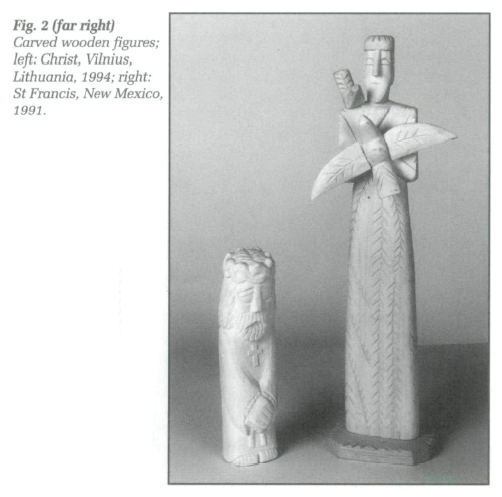 Display large image of Figure 2
Display large image of Figure 221 Tourists want to bring back even a small fragment of some traditional craft — however questionable the tradition and the craft are — a fragment of the true cultural cross. Tourism destinations are increasingly filled with objects of mass-produced craft look-alikes. The streets of Brugge, Belgium, for example, are lined with shops selling all forms of lace (mostly mass produced), a legacy from its role in the medieval lace industry. Likewise, shop after shop in Venice market tiny glass oddities, most far removed from the skill (and cost) involved in the products of the glass houses of nearby Murano. And even tiny and inexpensive pottery figures are brought out by native Americans for the tourists who walk through Sky City in Acoma Pueblo in New Mexico — again, only fragments of the once-vibrant clay traditions. In many places, the image of the traditional house becomes the symbol for imagined cultural values; architecture conveys place, whether it be stepped gables from Brugge (Fig. 3), colourful houses from Burano near Venice (Fig. 4), or fridge magnets from England (Fig. 5). Models of clay become models of place. And in all these tourist activities, such objects are there because they are affordable. All of these objects are forms of "frozen folklore," created for the sake of the tourist market.30
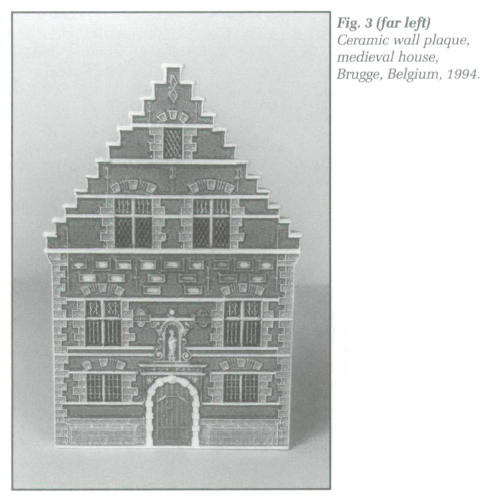 Display large image of Figure 3
Display large image of Figure 3 Display large image of Figure 5
Display large image of Figure 522 The products of tradition are no longer considered the domain of the wealthy; less expensive objects are now in demand for the less affluent who yearn for any cultural crumbs. And as the demand has risen, new and inexpensive products have developed out of forms with clear historical origins. With many aspects of tourism (and cultural studies), an increasing democratization has occurred of what were previously upper-class attitudes and pursuits.31
23 Craft revivals and the popular notion of what falls under the rubric of craft still need to be examined.32 Preliminary studies have been done on the creation of new craft traditions by drawing on earlier local techniques and genres to create new forms (that in future generations may be considered as indigenous). The Grenfell Mission in Newfoundland adapted local textile traditions to create a new form of hooked rug; a similar intervention occurred in Cape Breton, where American philanthropists provided the models and expertise for the Cheticamp rug that is today widely known and marketed as traditional.33 And while Frank Philpot, a basketmaker in Wrentham, Suffolk, England, can still produce older forms such as an oyster tender (Fig. 6), he sells more examples of baskets to hold magazines or fireplace tongs. The traditional and the modern blur.
Contemporary Craft
24 On a wider contemporary scale, what do we include under this notion of craft? Our popular magazines are filled with sections on the "Country Look" — somehow quaint, rural and nostalgic: bare wood and "heritage" colours. Promotional material for a recent interior-decorating book featuring this look explains: "Country style is characterized by enjoyment of the good things in life, respect for simplicity and natural materials, rapport with the land, and a sense of home and individuality."34 Trends as old as the Arts and Crafts Movement now blend with concern with ecology, to produce a recognizable cultural style sought after by yuppies worldwide.
25 A number of companies now specialize in marketing a wide range of "heritage" artifacts. "Past Times" in Britain, for example, has thirty-eight stores throughout the country, the "leading retailer of historic gifts in Britain," as its catalogue boasts.35 Products range from Celtic sword paper knives to Roman Fresco ties, from Anglo-Saxon jewellery to medieval jigsaw puzzles — much in the catalogue appears to be both "craft" and "heritage."
26 There are countless examples of the diversity of objects that fall under this category of "craft." We have craft supply shops at our malls, craft exhibitions, and craft fairs; each, again, catering to different groups with different aesthetics. In our spare time we enrol in evening courses that offer a wide range of skills under this notion of craft. How do the notions of craft reflect romantic values, and how do the products relate to greater trends?36
27 We have craft fairs with different criteria enforced by different juries, some guided by the aesthetics of a local crafts council, others by what the market demands.37 On a November Sunday afternoon in St John's, for example, Devon House Craft Gallery (run by the Newfoundland and Labrador Craft Development Association) featured the opening of a new "fibre artworks" exhibition by two craftspeople entitled "Just a Memory." The work intended to "explore the primitive elements of design and composition as a point from which to create original work." Across the street, at the Newfoundland Hotel, on the same afternoon, the Ceramic Craft Sale — sponsored by the Newfoundland and Labrador Ceramics and Craft Association — was being held, featuring primarily mould-created ceramic figures ranging from Santa Claus to wide-eyed puppies, from Nativity scenes to boy and girl angels kissing on a park bench. While these fairs were just across the street from one another, they were worlds apart with different aesthetics, different audiences, different intentions — but all under the rubric of craft. Not surprisingly, spectators at one were not seen at the other.
28 Ironically, then, the entire issue of how the desire for the indigenous genuine artifact — whether it is labelled as "folk," "primitive," "handmade," or "studio" — impacts on both the establishment of authentic canons, and the entire tourism trade, brings me back to the issue of the artifact, its design, its aesthetic dimensions. One of the possible focusses the study of material culture can take is how the authentic is constructed and marketed, and the related obsession with objects that are considered as handmade craft. While we can indeed investigate the reasons why such categories of objects are important in the modern world, we still must not lose sight of the characteristics of the objects we place in such categories. To keep our research from becoming merely a glorified form of sociology, to remain focussed on the artifact, we must find ways to carefully analyze the design components of objects, their formal characteristics — in short, their texture, colour, style, technology, and the many other aspects that have been the specialty of the connoisseur. There are several methodologies that can assist in this careful analysis of the artifact.
29 Material culture researchers have sometimes relied on the writings of designers to try and understand artifacts, but in many cases this has meant applying selected theories to what are considered traditional artifact forms. Writers such as David Pye and Christopher Alexander have provided insights to understand how the trained designer determines the final form of objects influenced by materials and context, as well as their conscious manipulation of shapes.38 However, there has always been a reluctance to more fully use such theorists, perhaps in part because their ideas are linked too closely to studio/gallery objects. Yet, more ethnographic research needs to be done on artifact makers of all kinds, moving beyond the artificial division between folk and elite. Michael Owen Jones said as much almost twenty years ago, but no scholar has yet to produce a good ethnography of a maker of studio objects — be they labelled as an artist or craftsperson.39 Increasingly, we realize the art world is no different from any other culture, and we must study its products and producers with the same ethnographic methodology historically reserved for non-literate groups. If such projects were undertaken, they might produce insights from an informant more able to articulate the aesthetic issues that are not discussed by the unselfconscious maker.
30 The community of elite craftspeople, critics, exhibit organizers and such seems to be moving toward a more critical look at many of the issues that concern ethnographers. In October 1993, for example, a multidisciplinary conference took place in Ottawa, partly sponsored by the Canadian Museum of Civilization. The purpose of this meeting was to bring together both artifact makers and artifact analysts, to establish a more fruitful dialogue between those who create objects, and those who document and study the creative process. Several of the papers were steps toward the ethnographic study of the elite artifact, as well as how the notion of "craft" is perceived as a cultural category in contemporary culture.40
31 Another approach to more fully analyze the aesthetic dimensions of the individual artifact might be to rely on the insights provided by the discipline of design history, a relatively recent academic pursuit that is developing in Great Britain.41 With close ties to the industrial design community, and with a great deal of attention paid to both the mass-produced artifact and its marketing, the preliminary writings of design history scholars manage to transcend much of the writing on material culture traditions that ethnologists have pursued. Design history is attempting to treat all artifacts — no matter how they are produced — as cultural products, and much research focusses on the reasons for the design of modern objects in industrialized cultures, and the reasons for their design. While design historians lack ethnographic experience, and their writings are often based on secondary source material, their understanding of the relationships between designs and consumerism will prove useful in attempting to understand contemporary material culture.
32 Much of the work by design historians obviously removes the contentious issue of the mass-produced object as being somehow less reflective of cultural values than those based on local designs and technologies. A distinction has to be made between design and fabrication.42 All designs reflect some particular cultural value, no matter who it is that creates those designs. The method of fabrication, either by hand or by machine, often does not diminish the messages that an artifact is sending. Some forms of late nineteenth century chairs in Newfoundland, for example, were carved by hand to imitate factory mass-produced versions. Without a lathe, it was the only way that a local craftsman could produce the rounded legs then in vogue. No matter whether these chairs were fabricated by hand or machine, they both had the same design and spoke to the desire to own the latest seating fashions.43
33 Material culture studies must move in directions that pay attention to how cultural activities are fabricated into traditions that are then marketed in the modern world. Such marketing creates artifactual connections to perceived pasts and peoples in a world where isolation and purity no longer exist. Concern with objects, their designs and styles, became a substitute today for what are labelled in non-Western or pre-industrial cultures as spiritual values.44 The search for authenticity is in many ways a search for spiritual essence. And if the search for the spiritual no longer leads to God, it may find some ideal anonymous folk community of the past or the heated genius of an artist's studio where authenticity originates.45 It is our role, then, to understand how objects help fulfill these shifting spiritual needs.
34 Our study of material culture must admit the mixture of designs, types and times — the increasing universalizing of regionalisms considered authentic. Today, no field, forest, factory or faculty is ever far from CNN, MTV, McDonalds or Coca Cola. We are too late if we think we can find the untouched, the purely regional, the distinctively national. And trying to fabricate an untouched group merely condemns a native people (be they native American, Irish, Newfoundland, or Canadian) to some museumized existence in order to satisfy rootless moderns who want to believe that somewhere the centre still holds, there is a hearth where meaning still resides (Fig. 7).
35 Traditions are created and negotiated, and cultural productions can no longer be considered as "impure" or "anomalous."46 As tourism is fast becoming the largest industry in the world, it is fuelled often by scenes created under the rubric of heritage. In this global village, researchers are often directly or indirectly involved with the documentation and preservation of those heritages. The new directions in material culture studies will recognize that we are all cultural tourists searching for links between design and value, that the tourist world of host and guest echoes our own work of informant and researcher.47
36 We scholars are in the business of documenting current artifact trends, trying to determine what the next best seller will be. Rootless secular urbanités will seek these new artifact icons in their struggles to re-establish lost meaning. Yet, in those struggles we have a moral responsibility as researchers to ensure that artifact makers can survive, yet recognize that the authentic object may finally be a product as much of postmodern fantasy as historical fact.
I would like to thank Neil Rosenberg for help with references, and Gloria Hickey who commented on an earlier draft of this essay. This paper was originally presented as part of a symposium marking the fiftieth anniversary of the Centre d'études sur la langue, les arts et les traditions populaires des francophones en Amérique du Nord (CELAT), Université Laval. A version will be published in French in the conference proceedings, L'ethnologie des francophones en Amérique du Nord, 1944-1994: Bilan et perspectives, edited by Laurier Turgeon, and to be published by Presses de l'Université Laval.
